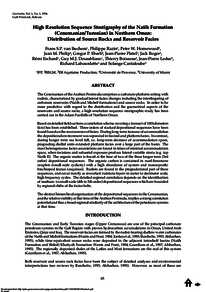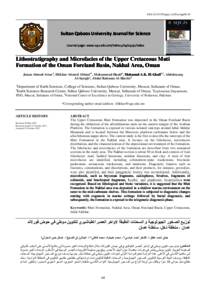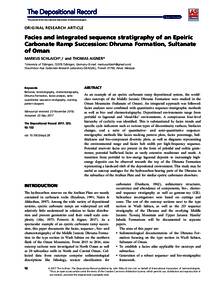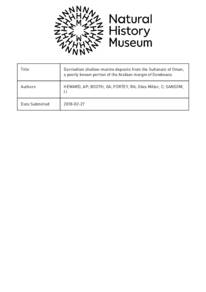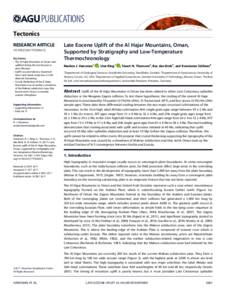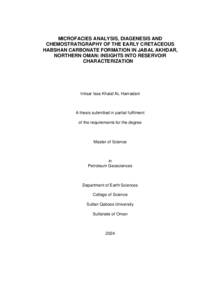Document
High resolution sequence stratigraphy of the Natih formation (cenomanian/turonian) in northern Oman : distribution of source rocks and reservoir facies.
Identifier
DOI: 10.2113/geoarabia010165
Source
GeoArabia. v. 1, 1, p. 65-91
Contributors
Razin, Philippe., Author
Homewood, Peter W., Author
Philip, Jean M., Author
Eberli, Gregor P. , Author
Platel, Jean Pierre., Author
Roger, Jack., Author
Eschard, Rémi., Author
Desaubliaux, Guy M. J., Author
Boisseau, Thierry., Author
Leduc, Jean Pierre., Author
Labourdette, Richard., Author
Cantaloube, Solange., Author
Country
Bahrain.
City
Manama
Publisher
Gulf PetroLink.
Gregorian
1996-01-01
Language
English
Extent
p. 65-91
Subject
English abstract
The Cenomanian of the Arabian Peninsula comprises a carbonate platform setting with rudists, characterized by gradual lateral facies changes including the interfingering of carbonate reservoirs (Natih and Mishrif formations) and source rocks. In order to be more predictive with regard to the distribution and the geometrical aspects of the reservoirs and source rocks, a high resolution sequence stratigraphic study has been carried out in the Adam Foothills of Northern Oman. Based on detailed field sections a correlation scheme covering a transect of 100 kilometers (km) has been established. Three orders of stacked depositional sequences have been found based on the reoccurrence of facies. During long-term increase of accommodation the depositional environment was separated in basinal and platform facies. In contrast, during longer term sea level fall, i.e. long-term decrease of accommodation space, prograding shelfal units extended platform facies over a large part of the basin. The most heterogeneous facies associations are found in times of minimal accommodation space, when incisions and subaerial exposure produce lateral variable strata (e.g. top Natih E). The organic matter is found at the base of two of the three longer term (3rd order) depositional sequences. The organic carbon is contained in marl-limestone couplets (small-scale cyclicity) with a high abundance of oysters and monospecific brachiopod faunas (coquinas). Rudists are found in the progradational part of these sequences, and occur mostly as reworked rudstone layers in meter to decimeter scale, high frequency cycles. The detailed regional correlation depends on the identification of medium- to small-scale (4th to 5th order) depositional sequences which are bounded by regional shifts of the facies belts. The distinct hierarchical organization of the depositional sequences in the Cenomanian, and the relative stability at that time of the Arabian Peninsula, implies a strong correlation potential and thus a broad regional similarity of the architecture of the petroleum systems at that time.
Member of
ISSN
1025-6059
Category
Conferences & workshops

